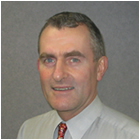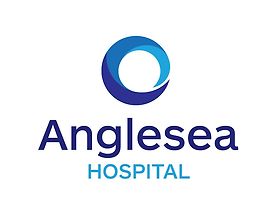Waikato > Private Hospitals & Specialists >
Anglesea Hospital - Otolaryngology
Private Surgical Service, ENT/ Head & Neck Surgery
Description
Anglesea Hospital is a state of the art hospital and day stay facility located in the heart of Hamilton.
- Three state of the art theatres designed and built to international standards which have the latest digital equipment, enabling surgeons better visualisation during complex minimally invasive surgical procedures.
- 3D imaging solution which provides improved speed, accuracy and precision for surgical procedures.
- Innovative designs in movable equipment eliminating permanent fixtures and lessening the risk of infection during procedures.
- Highly experienced registered nursing staff committed to providing patients with the very best in preoperative, intraoperative and postoperative care
- Fully equipped Central Sterile Supply Department (CSSD) staffed by fully qualified CSSD Technicians, providing sterile equipment for all procedures.
- Ongoing monitoring by an Infection Control Nurse to ensure excellent Infection Control management
- Training room for live streaming of laparoscopic surgery for specialists from all over New Zealand.
Consultants
-

Mr Andrew Currie
Otolaryngologist
-

Mr Henry Emanuel
Otolaryngologist
Procedures / Treatments
Your adenoids may be removed as part of a tonsillectomy. This operation is also performed through your mouth.
Your adenoids may be removed as part of a tonsillectomy. This operation is also performed through your mouth.
A tiny camera attached to a long tube is inserted through your nose or mouth and passed down through the airways into your lungs. This allows the surgeon to make a diagnosis either by seeing directly what is causing the problem or by taking a small tissue (biopsy) or lung secretion sample.
A tiny camera attached to a long tube is inserted through your nose or mouth and passed down through the airways into your lungs. This allows the surgeon to make a diagnosis either by seeing directly what is causing the problem or by taking a small tissue (biopsy) or lung secretion sample.
An incision (cut) is made behind your ear and the skin pulled back exposing the mastoid bone. A hole is drilled through this bone to expose the cochlear. The electrodes of the cochlear implant are inserted into the cochlear while the receiver part of the implant is embedded into the skull just underneath the skin. The skin is then replaced back over the implant.
An incision (cut) is made behind your ear and the skin pulled back exposing the mastoid bone. A hole is drilled through this bone to expose the cochlear. The electrodes of the cochlear implant are inserted into the cochlear while the receiver part of the implant is embedded into the skull just underneath the skin. The skin is then replaced back over the implant.
A tiny camera attached to a tube (endoscope) is inserted into your nose. Very small instruments can be passed through the endoscope and used to remove small pieces of bone and soft tissue. This opens up the ventilation and drainage pathways in the outer wall of your nose.
A tiny camera attached to a tube (endoscope) is inserted into your nose. Very small instruments can be passed through the endoscope and used to remove small pieces of bone and soft tissue. This opens up the ventilation and drainage pathways in the outer wall of your nose.
This operation is performed through the ear canal. A hole is made in the eardrum and the middle ear drained. A small hollow tube (grommet) is placed in the eardrum hole which allows air into the middle ear.
This operation is performed through the ear canal. A hole is made in the eardrum and the middle ear drained. A small hollow tube (grommet) is placed in the eardrum hole which allows air into the middle ear.
A tiny camera attached to a long tube is inserted into your mouth and passed down through your pharynx into your oesophagus. This allows the surgeon to make a diagnosis either by seeing directly what is causing the problem or by taking a small tissue sample (biopsy).
A tiny camera attached to a long tube is inserted into your mouth and passed down through your pharynx into your oesophagus. This allows the surgeon to make a diagnosis either by seeing directly what is causing the problem or by taking a small tissue sample (biopsy).
Nasal polyps are removed by inserting small instruments through your nostrils which can grasp and cut out the polyps.
Nasal polyps are removed by inserting small instruments through your nostrils which can grasp and cut out the polyps.
Small cuts (incisions) are made either on the inside or outside (in the creases) of the nose. Excess bone and/or cartilage are removed and the nose reshaped.
Small cuts (incisions) are made either on the inside or outside (in the creases) of the nose. Excess bone and/or cartilage are removed and the nose reshaped.
Tonsils are removed in an operation performed through your mouth. The tissue between your tonsils and throat is cut and your tonsils removed.
Tonsils are removed in an operation performed through your mouth. The tissue between your tonsils and throat is cut and your tonsils removed.
This operation repositions the nasal septum and is performed entirely within your nose so that there are no external cuts made on your face.
This operation repositions the nasal septum and is performed entirely within your nose so that there are no external cuts made on your face.
Disability Assistance
Wheelchair access
Website
Contact Details
Anglesea Hospital
Waikato
-
Phone
(07) 957 4915
-
Fax
(07) 957 4914
Email
Website
19 Knox Street
Hamilton Central
Hamilton
Waikato 3204
Street Address
19 Knox Street
Hamilton Central
Hamilton
Waikato 3204
Postal Address
PO Box 9077
Hamilton
Was this page helpful?
This page was last updated at 10:48AM on July 24, 2024. This information is reviewed and edited by Anglesea Hospital - Otolaryngology.

